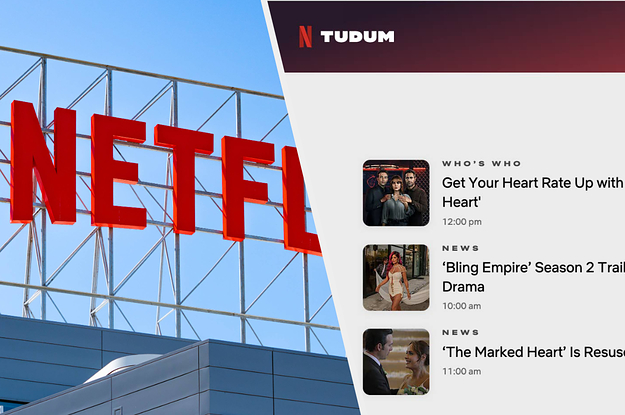Welcome back to our “WordPress.com Favorites” series! In these interviews, we’ll be highlighting bloggers about their passion project. Caution: contents guaranteed to be inspiring.
Today’s featured blog, The Pelikan’s Perch, dives deeply into a niche of a niche: proprietor Joshua Danley writes solely about Pelikan-brand fountain pens.
Even if you’ve never written with a fountain pen and know nothing about this graphological hobby, you’ll be captivated by Joshua’s interview below.
1. Tell us a little bit about yourself. What do you do for a living? What do you write about? How long have you been blogging?
First and foremost, I am a father to two sweet and rambunctious little boys and a husband to an amazing wife. Most of the time, you can find me working at a community hospital in the Philadelphia suburbs. I am a pulmonary and critical care physician by trade, working in both in-patient and out-patient settings as well as serving as the medical director of my hospital’s ICU. As you can imagine, my days can be long and intense, never more so than since COVID-19 landed on our doorstep.
It might surprise some, then, to learn that my blog has nothing to do with medicine or family. Instead, I write exclusively about the Pelikan brand of fountain pens, a brand that is nearly 184 years old.
I launched my blog, The Pelikan’s Perch, on September 1, 2014, but I’ve been collecting fountain pens since 2012. While studying for my internal medicine boards, I would take breaks from studying by researching my small but growing collection of pens. It was a great way to decompress. I found a lot of great information, but it was fragmented and widely distributed across the varied corners of the internet. I spent a lot of time piecing it all together, really for nothing more than my own edification.
At some point, it struck me that others might enjoy and benefit from the information that I was gathering for myself. That was the catalyst for the blog. I have no formal writing experience, though I always excelled in my English classes. I sought to combine a colloquial, conversational language that was easy to access while still applying a more rigorous scientific approach to the research behind each piece.2. Why Pelikan specifically? What makes the brand so special? Why not write about fountain pens more broadly?
I received my first fountain pen in 2009 but have only been collecting them in earnest since 2012. I first collected a broad swath of brands and experienced many unique filling systems, dabbling in anything that caught my eye. It was a great education in the history and design of fountain pens.
It wasn’t until 2013 that I acquired my first Pelikan, a lightly used white M205. It was love at first sight. The M205 was my first higher-end, piston-filled fountain pen and it stood out for its clean design and perfect balance when posted. It was enough to make me start seeking out other Pelikans. Don’t get me wrong, it wasn’t like I made a snap decision on the spot to dedicate myself solely to one brand, but as I began to gravitate more and more towards Pelikan, I started to forsake all of the others.
My collection of Pelikans would grow with the addition of an old-style Black/Green M600 and then an M400 Tortoiseshell White. A medical resident’s salary isn’t much to speak about, so I started selling off my earlier non-Pelikan acquisitions to fund my new addiction, a decision that I have yet to regret all these years later.
What makes the brand so special is that Pelikan pens have an indescribable quality, a character and a discipline, that makes owning and using them a joy that transcends the sum of their parts. There is a rich history and heritage behind the brand that really captivates the imagination when you start digging into it. I don’t write about fountain pens more broadly simply because there are a lot of amazing people already working in that space and putting out great content. I wanted my voice to be unique, so I sought out a niche within a niche. I think that laser focus has allowed me to bring high-quality content to the blog that might not otherwise be possible if I was more broadly focused.
3. You write within a niche of a niche. Do you ever feel constrained or like you might run out of ideas? Is it easy to come up with new content ideas?
Time. Time is what I’m constrained by, specifically the woeful lack of it. My day job keeps me very busy, so my blogging is shoehorned into the odd hours of the night, at least when I’m able to stay awake. A lot of research goes into many of my pieces, and it is time-consuming to try and get things right. It’s not the subject matter that constrains, at least not yet. The Pelikan brand traces its roots back to 1838 and they have been making fountain pens since 1929. That’s 184 years of company heritage and 93 years of pen making, which means that there is plenty of fodder there to write about — if only my time and imagination were equally expansive. It has been a real blast being able to bring some of the more esoteric and buried information about the brand and its pens to the surface. I have a lot more ideas that I’m just waiting to be able to explore.
4. What are the benefits of writing with a fountain pen? What would you say to someone who’s never written with one in order to get them to try?
First, I find the act of using a fountain pen somewhat cathartic. We are so connected and device-oriented these days. There is something special about unplugging and putting pen to paper. That tactile feedback, the nib gliding on a smooth line of ink, seeing your words come to life, that is something very rewarding. It can really unlock your creativity in a way our digital devices can’t.
It also connects us to the past. While there are plenty of new, modern pens to be had, there are just as many vintage models out there. Picking one up can’t help but evoke images of who might have owned it and what might they have written with it. It’s a fun exercise of the imagination.
The abstract aside, I think using a fountain pen helps improve retention and can be a stress reliever. Also, it can be very rewarding for those that like to write and send letters. When so much of our mail is junk, receiving a handwritten letter from someone is a rare treat and a special gift that anyone can give. That’s not a fountain pen–specific activity, but the exercise is more satisfying than when using a ballpoint.
5. There’s a robust community of fountain pen enthusiasts out there. What are some of your favorite resources, for folks who might be interested in exploring this vast world?
When I was given my first fountain pen in 2009, I crashed and burned. I had no idea what I was doing, and I didn’t know where to look. That lesson in frustration turned me off to the concept and it took three years before I’d find my way back. The second go-round was much more successful, largely thanks to sites like The Fountain Pen Network and Fountain Pen Geeks which were very influential for me in my early days. I think they are still great repositories of information and there is a lot there for a novice to explore and unpack.
Other sites are great too, such as r/fountainpens over on Reddit. Those are just some of the bigger forums and discussion boards. It would take way too much space to list all of the other great bloggers and other resources out there that also have great information. The forums make for a good starting point though.
6. Do you have any tips for aspiring bloggers, writers, and/or hobbyists? What has kept you going all these years?
Find your own niche within a niche. Write about something you love, something close to the heart. That will keep you going.
Keep at it but don’t sweat posting every day or every week. Do what you can, when you can. When it starts to feel like work and you begin to struggle, step away from it. It shouldn’t be a chore.
For me, the blog has been a therapy of sorts. It’s a refuge where I can go to unplug from the stress of my day job and get lost in a world that has nothing to do with medicine. That stress reliever has been invaluable to my mental health.
If you think you’ve discovered your own niche within a niche, but are a little stuck in getting your site off the ground, check out our free, self-paced Intro to Blogging course.
Also be sure to read the first two features in this WordPress.com Favorites series: The Travel Architect writes all about traveling and doesn’t narrow in on a single geographic area or travel topic; Empish Thomas writes about all kinds of things, from disability advocacy, to book/podcast reviews, to why she loves writing.
Editor’s note: This interview has been lightly edited for clarity.
Quelle: RedHat Stack







